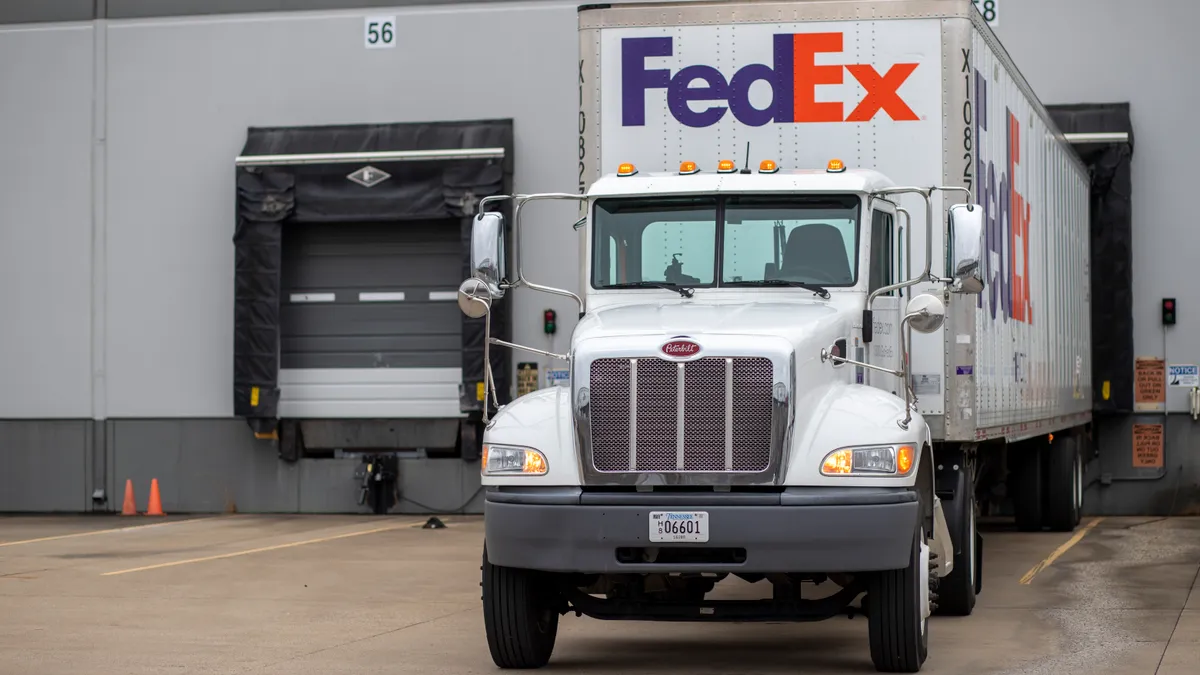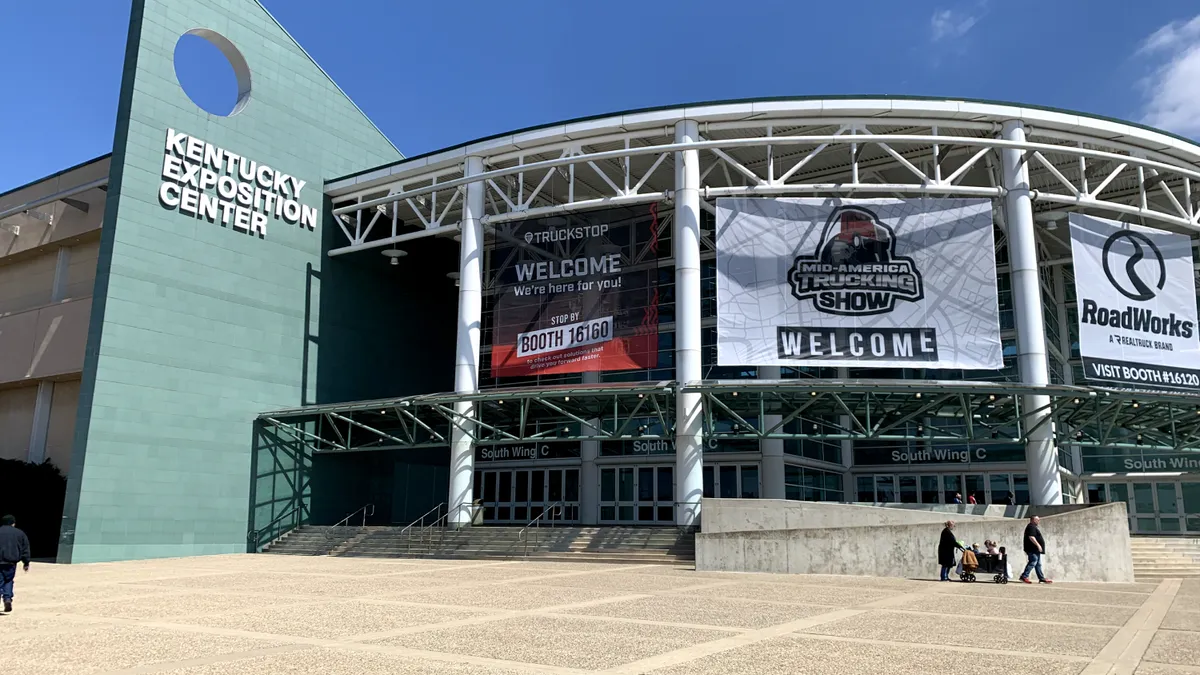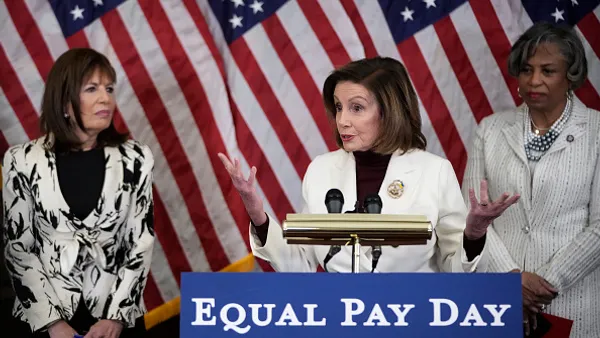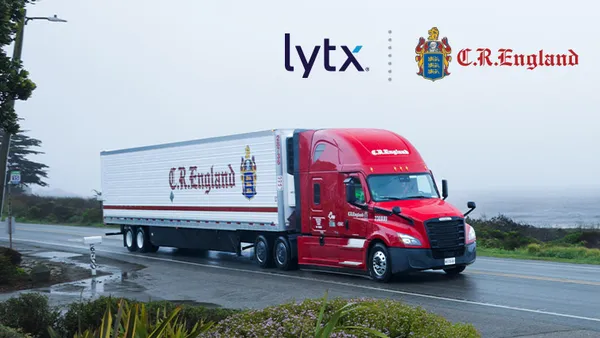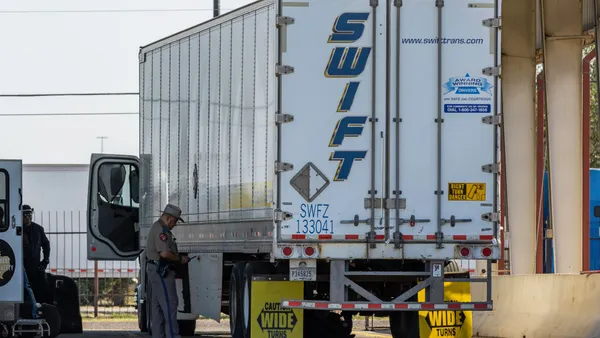Drivers' "other screen" is drawing the attention of fleets, which seek to attract and retain employees by keeping in touch with their needs.
That screen is social media, and it's playing a larger role in the lives of drivers.
"Social media is very large component of everyone's lifestyle nowadays," said Leah Shaver, president and CEO of the National Transportation Institute.
Shaver said drivers, often away from home for days, interact with family, friends and other drivers via social media. As with many communities, social media has increased the visibility of truck drivers, their opinions and perhaps their influence.
Drivers are not shy about sharing their stories and videos on social media. The videos and pictures are often so compelling, they become stories on news sites writing to truckers.
One such site is CDLLife. Its views on social media direct traffic back to the website, indicating readers often start their day reading posts on social media giants such as Facebook. A recent story on CDLLife was about Franky Cothiere, an OTR driver who produced a rap song about his life as a trucker.
And as with so much on social media, the irritants of life and work are often targeted. In his song, Cothiere has a few complaints about traffic, sprinkled in among his love for trucking.
"These four-wheel cars getting on my nerves," he sings. "Cutting in front of me, on my word."
Cothiere's video demonstrates drivers are not shy about sharing their opinions. And proponents of gathering driver feedback believe fleets can learn from the catchy songs and social media posts about gripes.
Yet there is also an acknowledgment that fleets can be shy about feedback, given how negative the internet and social media can be. Shaver said fleets should not fear the feedback they get, nor the often and storied negativity of the internet.
"I don't think you want to ignore negativity," said Shaver. "The elements of their concern are absolutely important."
As drivers talk, so should execs
Shaver told a WorkHound webinar on April 7 that drivers are sharing information online, some of it negative. The drivers are eagle-eyed when it comes to perceived slights, such as a shipper posting a sign that warned it had no facilities for drivers. During the webinar, she shared a picture of the post, although she did not name the shipper.
Shaver noted that fleets and shippers need to pay attention in this time of driver shortages and capacity challenges. Drivers know they have an advantage in the current market conditions, and even dollars are not attracting them to certain jobs, she said.
"Drivers are saying 'no' to our opportunities," Shaver told the webinar.
"If you want to market a business, you have to be where people are."

Aaron Dunn
Director of Sales and Marketing for PDQ America
The answer is more communication, some trucking officials say.
"Social media is the modern way to communicate," said Aaron Dunn, director of sales and marketing for PDQ America, a logistics company that specializes in flatbed, expedited and oversized trucking.
Dunn said social media has increased in value and power over time. The power of social media means fleets need to be there, he said.
"From our experience, if you want to market a business, you have to be where people are," said Dunn.
Dunn said PDQ America has a presence on Facebook, Instagram and LinkedIn. Dunn said the posting goal isn't to hit a home run every time.
"We've had posts go viral," said Dunn. "Most of the posts don't."
And posts differ depending on the platform. LinkedIn is a business and networking site. It usually requires a different touch than Twitter, where users are going for quick reading and dopamine-inducing reactions. Dunn said PDQ America works to tailor the posts to the platform.
What to post and what memes are
Many social media posts make use of memes — "an amusing or interesting item (such as a captioned picture or video) or genre of items that is spread widely online especially through social media," reads Merriam-Webster's second definition for the word.
This sounds like an unorthodox way to communicate, but Dunn embraces memes. "They are a means of connection," said Dunn. "Everyone has seen a meme."
Dunn said posts make job candidates more aware of PDQ America. And during job interviews, candidates have said they have heard of PDQ America through podcasts and Facebook, Dunn said.
"It has paid off," said Dunn.
Strategies can vary. But stories are a big part of the strategy. Stories shared through social media about team success can attract driver candidates, Dunn said.
A story of a firm driver who has passed 1 million miles with the company can make a candidate confident about applying. Or stories about strong pay or how drivers can spend more time at home with their families can increase interest. General company objectives are good to share, too, Dunn said, as is an anonymous story about how a customer had an issue, and how the fleet responded to it.
But smaller bits of information can help, too, even pictures of the type of freight hauled, Dunn said.
"Accentuate [strengths] by sharing it with other people," said Dunn.
As for what not to post, Dunn said to avoid things that are overtly political or could be perceived as such.
And, when it comes to negativity from social media users, Dunn said not to be afraid. Like Shaver, Dunn said fleets should watch for such negativity and use it as possible feedback.
"We see it as an opportunity," said Dunn.




